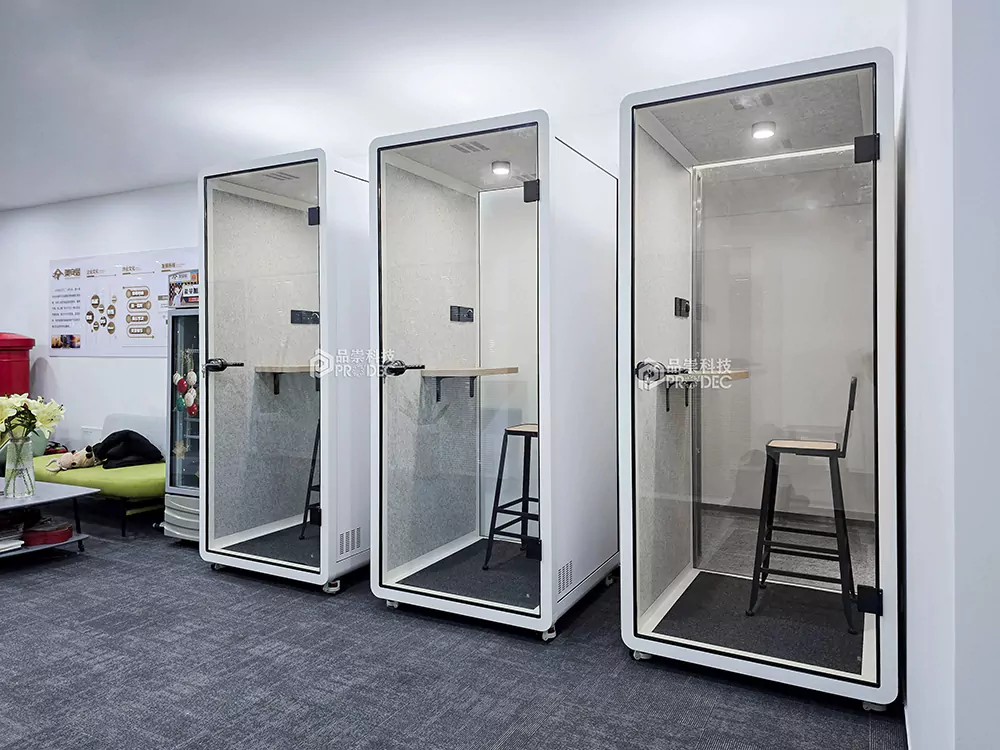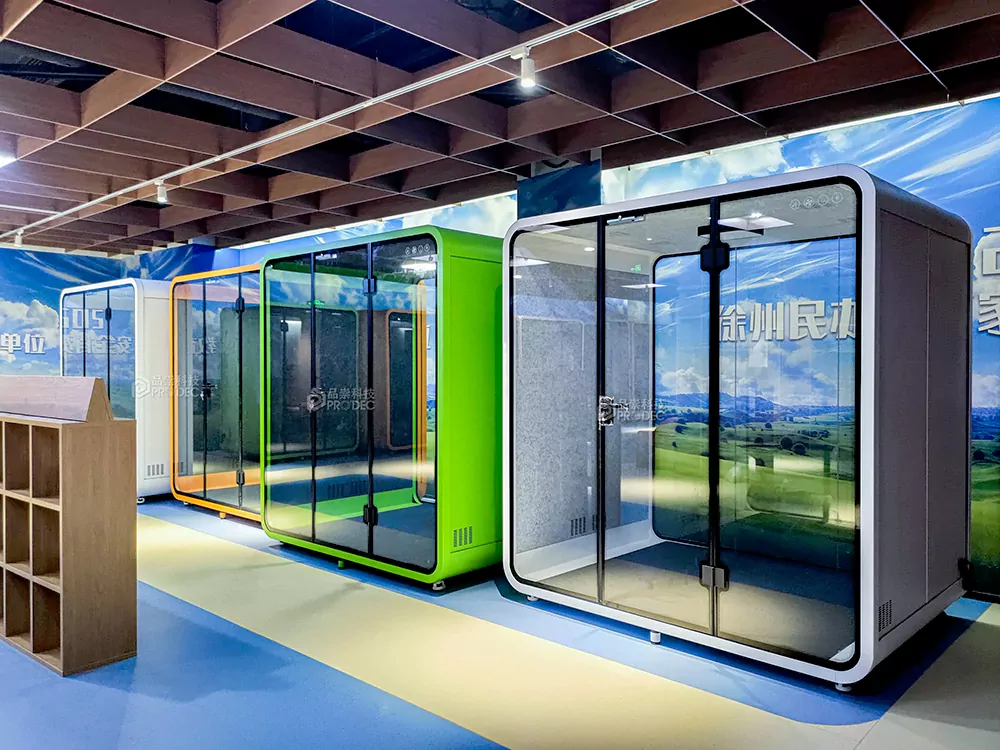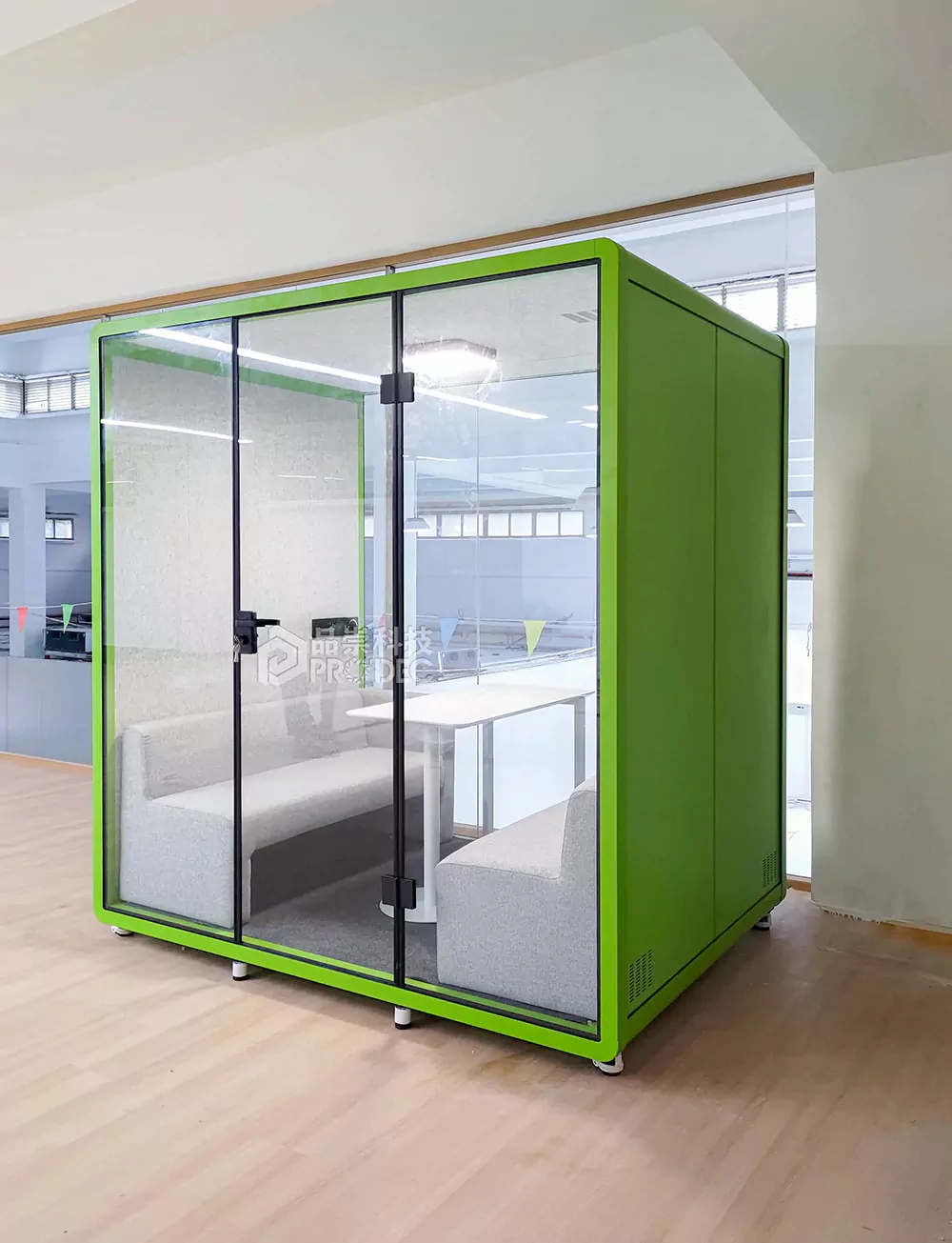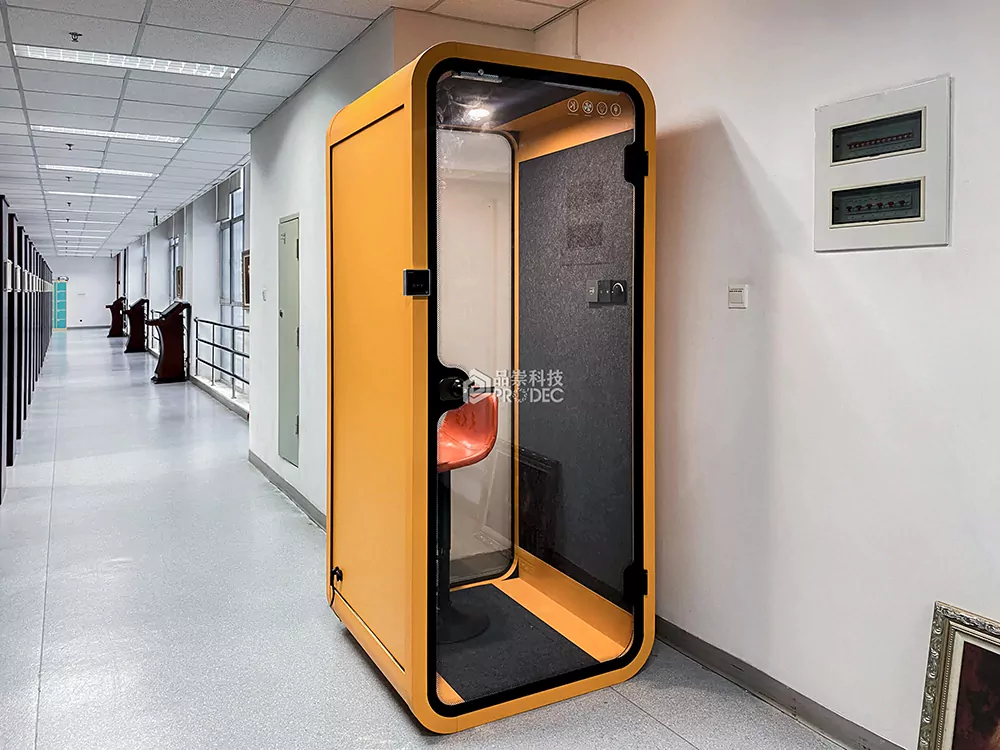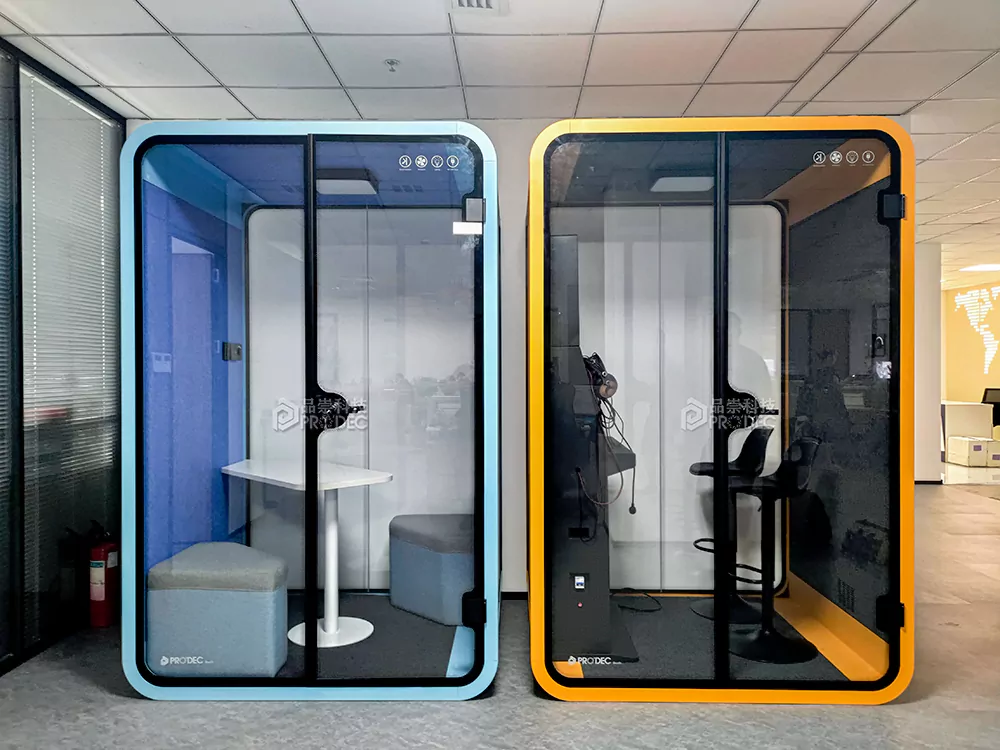Acoustic Booth:Guide to Space-Efficient Sound Isolation
Why Choose a Compact Acoustic Booth for Small Rooms?
In modern urban living and compact office environments, space efficiency is paramount. A Compact Acoustic Booth for Small Rooms offers an innovative solution for individuals seeking high-performance sound isolation without sacrificing valuable floor area. These booths are engineered to fit into tight spaces such as home studios, remote work corners, or shared office layouts, providing a private acoustic environment for recording, calls, meditation, or focused work. Unlike traditional soundproof rooms that require major construction, these modular units are prefabricated, easy to install, and optimized for acoustics from the ground up.
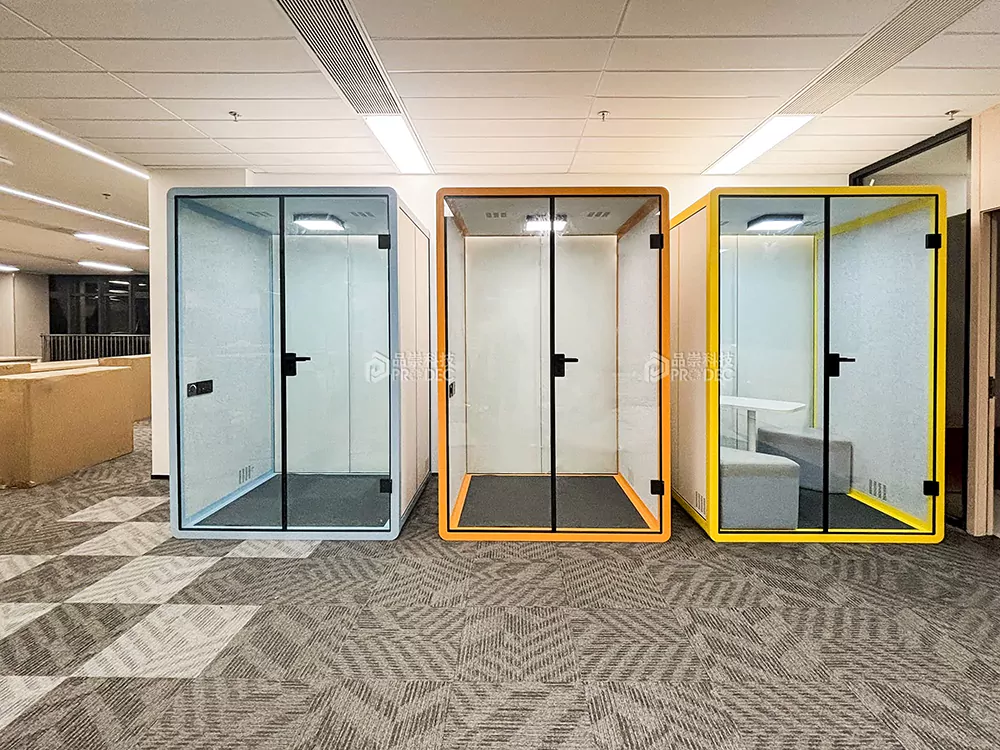
The demand for personal acoustic spaces has surged with the rise of remote work, podcasting, and online content creation. For users in apartments or small offices, ambient noise from neighbors, HVAC systems, or coworkers can severely impact audio quality and concentration. A compact acoustic booth addresses these challenges by combining advanced materials, intelligent design, and portability. This guide explores the key features, technical specifications, and step-by-step considerations for selecting and optimizing a Compact Acoustic Booth for Small Rooms.
Core Design Principles of Compact Acoustic Booths
Multi-Layered Sound Barrier Technology
The foundation of any effective Compact Acoustic Booth for Small Rooms lies in its multi-layered wall construction. These booths typically integrate:
- Äußere Schale: Made from aerospace-grade aluminum or reinforced composite panels for structural rigidity.
- Damping Layer: High-density damping mats (e.g., constrained layer damping materials) minimize panel resonance.
- Core Insulation: High-density rockwool (>80kg/m³) acts as the primary sound absorption layer.
- Air Gap: An internal air cavity decouples sound waves, enhancing transmission loss.
- Inner Liner: Perforated metal or fabric-wrapped acoustic panels with mineral wool backing absorb internal reflections.
This layered approach ensures both sound blocking (STC rating) and internal reverberation control (RT60).
Floating Floor and Decoupled Structure
To prevent structure-borne noise, premium models employ a six-sided floating design. This means the interior shell is mechanically isolated from the outer enclosure using resilient mounts or neoprene gaskets, reducing vibration transfer by up to 15% compared to fixed structures.
Step-by-Step Guide to Selecting Your Ideal Booth
- Assess Room Dimensions: Measure available space; ensure at least 5 cm clearance on all sides for ventilation and access.
- Define Primary Use Case: Determine whether the booth will be used for voice calls, instrument recording, podcasting, or meditation—each has different acoustic requirements.
- Evaluate Noise Reduction Needs: Identify external noise sources (e.g., traffic, HVAC). Aim for a booth with a minimum Sound Transmission Class (STC) of 35 and Outdoor/Indoor Transmission Class (OITC) of 30.
- Check Ventilation Requirements: Ensure the booth includes a silenced ventilation system capable of full air exchange every 3 minutes without introducing noise above 25 dB(A).
- Verify Power & Connectivity: Confirm support for 100–240V AC and USB 12V outputs to power microphones, lights, and laptops inside the booth.
Performance Comparison: Standard vs. Premium Compact Booths
| Merkmal | Standard Model | Premium Model |
|---|---|---|
| External Dimensions | 120 x 100 x 200 cm | 130 x 110 x 210 cm |
| Noise Reduction (STC) | 32–38 dB | 45–52 dB |
| Ventilation Noise Level | <30 dB(A) | <25 dB(A) |
| Internal Lighting | Fixed 4000K LED | Tunable 2700K–6500K with dimming |
| Smart Features | Manual controls | App control, occupancy sensing |
Installation and Optimization Process
- Vorbereitung des Standorts: Clean and level the installation surface. Avoid placing near walls with active plumbing or electrical conduits.
- Assemble Frame Modules: Follow manufacturer instructions to connect pre-fabricated wall panels using tongue-and-groove joints sealed with acoustic caulk.
- Install Door & Sealant: Mount the double-sealed acoustic door with magnetic closure and compression gaskets to eliminate air leaks.
- Integrate Ventilation Unit: Connect the inline fan with muffler ducting, ensuring intake and exhaust paths are shielded from direct noise exposure.
- Calibrate Internal Environment: Set lighting color temperature to 4000K for daytime use and adjust humidity to 40–60% RH using built-in sensors.
Acoustic Performance Metrics and Real-World Testing
To validate the effectiveness of a Compact Acoustic Booth for Small Rooms, independent testing using INSUL MARSHALL ACOUSTIC simulation software is recommended. This predictive modeling tool analyzes sound wave propagation and absorption across frequencies (125 Hz – 4 kHz), allowing precise tuning before deployment.
Field tests show that a well-installed booth can reduce ambient office noise from 70 dB (normal conversation) to below 30 dB—equivalent to a quiet library. High-frequency sounds like phone rings (around 3 kHz) are attenuated by over 40 dB, while low-frequency HVAC rumble (63–125 Hz) sees reductions of 25–35 dB.
User Experience and Customer Feedback
“I installed the compact booth in my 10m² home office. The difference is night and day. My podcast recordings no longer pick up street noise, and Zoom calls are crystal clear.”
— Sarah T., Audio Producer, Berlin
“As a remote worker in a busy co-working space, this booth gave me back focus. My productivity increased by nearly 20%, and colleagues say I seem less stressed.”
— James L., Software Developer, Singapore
Advanced Features in Next-Gen Models
Modern Compact Acoustic Booths for Small Rooms go beyond passive sound control. Emerging innovations include:
- Millimeter-Wave Occupancy Sensors: Automatically activate lighting and ventilation upon user entry.
- Active Noise Cancellation (ANC): Integrated microphone-speaker arrays generate anti-noise waves for residual low-frequency penetration.
- Biometric Monitoring: Optional modules track heart rate variability and ambient CO₂ levels to optimize cognitive performance.
Material Comparison: Wall Construction Options
| Material Type | Density (kg/m³) | STC Contribution | Best For |
|---|---|---|---|
| High-Density Rockwool | 80–100 | +20 dB | Broadband absorption |
| Multilayer Composite Panel | 65–75 | +18 dB | Balanced weight/performance |
| Mass-Loaded Vinyl (MLV) | 50–60 | +15 dB | Low-frequency blocking |
Maintenance and Long-Term Use
To ensure sustained performance of your Compact Acoustic Booth for Small Rooms, routine maintenance is essential:
- Inspect door seals monthly for wear or compression fatigue.
- Clean interior surfaces with non-abrasive wipes to preserve fabric integrity.
- Replace air filters in the ventilation system every 6 months.
- Use a hygrometer to monitor internal humidity and prevent mold growth.
- Re-calibrate smart sensors annually via firmware updates.
With proper care, a high-quality booth can last over 10 years while maintaining >90% of its original acoustic performance.
本文由人工智能技术生成,基于公开技术资料和厂商官方信息整合撰写,以确保信息的时效性与客观性。我们建议您将所有信息作为决策参考,并最终以各云厂商官方页面的最新公告为准。

